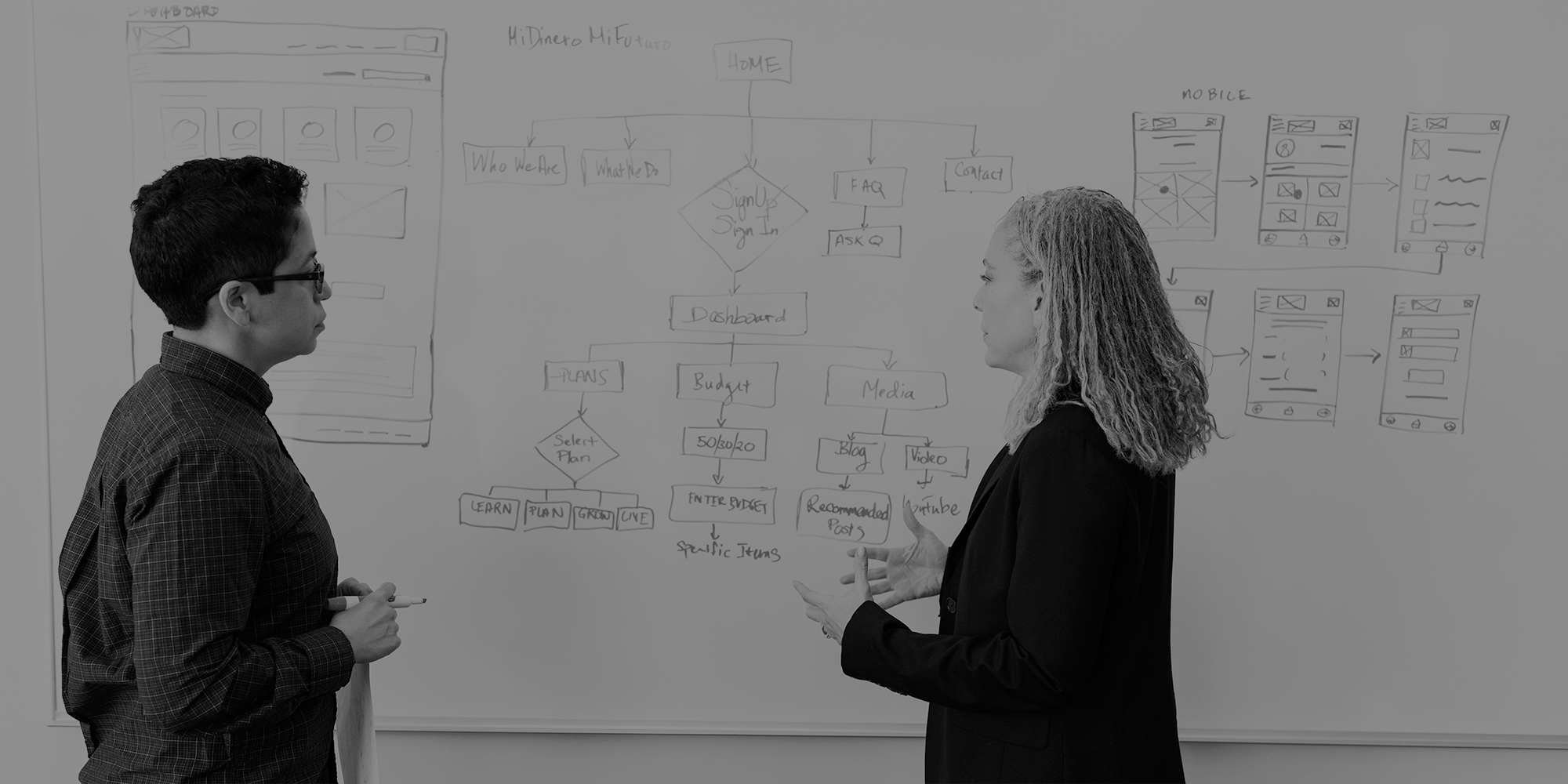If you’ve ever sat in a meeting with disgruntled colleagues trying to gracefully interrupt each other as you struggle your way toward a creative solution – you’re not alone! Unproductive meetings waste more than $37 billion a year, and businesses are still spending more and more time in meetings.1
Cutting meetings out completely might sound tempting, but brainstorming sessions are still a necessity in most offices. Thankfully with a little forethought and preparation, there are several ways to change unproductive brainstorming meetings into productive problem-solving sessions.
Why the UX perspective?
User Experience designers have developed numerous techniques for productive brainstorming out of sheer necessity. Brainstorming is an absolute must when it comes to design-related problem-solving. When brainstorming is a key part of the workflow, you develop ways to do it that produce excellent solutions while keeping your team sane!
What’s the problem are you tackling and who do you need to solve it?
Brainstorming isn’t an “all in” approach straight from the beginning. It’s important that the participants in your brainstorming session know the ins and outs of the problem you’re tackling as well as why their perspectives matter. Starting with a cross-section of the issue at hand allows for the context needed to produce relevant ideas. Often a smaller team with more diverse roles can really shine, allowing for different perspectives without an overload of ideas. Getting everyone on the same page creates a smooth surface for the team to build ideas off of.
Remove limitations
And we mean all of them! It’s easy to get bogged down with technicalities of what each solution may cost, how realistic it is, if it can be done in-house, social restrictions, if it’s technically possible, etc. For the first round of idea generation, let thoughts flow freely as they take you from solution to solution. Ideas that are more realistic can come from the strangest trains of thought! When you limit ideas, the flow is halted at that “impossible” solution, requiring the thinker to start back at square one.
Take this corny example:
“How do you put a giraffe into a refrigerator?”
Most people struggle with this question, trying to find some kind of pun, joke, or hidden meaning. If you remove the limitations in your mind the solution is as simple as opening the door and putting the giraffe in. Automatically our brains are programmed to think the giraffe is a full-sized artiodactyl mammal, and the refrigerator is the standard-sized appliance found in most kitchens. These sorts of pre-programmed limitations can make it hard to find the most direct solution.
Quantity over quality
We don’t have those backward! As professionals, we always want to produce the best product possible. Working hard to develop the best idea can seem like the best use of time, when in reality sinking all your time into developing one good idea leaves out so many other opportunities for exploration. UX gurus will often silently attack a problem with a stack of sticky notes. Thinking as quickly as they can, they scrawl out ideas one by one and tack them up on the wall for a set amount of time – usually one, two, or five minutes. This visual approach allows your teammates to see a clear train of thought so they can build off of your thoughts before the discussion occurs. Putting ideas down on paper first eliminates the social pressure that comes with a premature discussion, leading to a larger volume of thoughts.
Work with the team
Now that ideas have been laid out, it’s a good time to discuss everyone’s thoughts. Work to filter through each idea, group any repeats, and sort them into “Keep” “Maybe” and “Discard” piles. It’s likely that the discard pile will acquire most of the notes as you start to pull limits back into the process, but you may be shocked at how many surprising ideas stick around. Once this has been done, it’s a great opportunity to do another iteration of “Quantity Over Quality” sticky-note brainstorming to see if there’s anything else that can be expanded upon within your “Keep” and “Maybe” piles. Another round of filtering through each idea will leave the team in an excellent spot.
Sketch it out
In User Experience Design, this is often a time to literally sketch out ideas for interfaces or other designs. In other industries, sketching isn’t quite so necessary as far as layout and design go, but it’s still a good idea to sketch out how you might take an idea and make it into a solution. The most important part about this step is that you can’t just do it once! Ideation allows for many different solutions to come from one idea. Your first try may be the solution you end up working with, or maybe it’ll be your 51st try. It’s important to take multiple stabs at an idea, not just to pull together the best ideas, but also to predict and solve potential issues from multiple perspectives before they occur.
Walk away with your next steps
Once you’ve pulled together your sample solutions, it’s time to end the meeting with your next steps. You may have a specific idea you plan to expand upon to create your solution, or there may be a few that need to be addressed and researched. Assigning each member of the team some “next steps” gives each individual a clear and concise path and provides everyone with the context of where their work will fit in with other team members’ work to create the solution. This allows for the group to split apart to work but continue to keep everything on the same path toward the agreed-upon solution(s).
To read more about how design thinking and ideation can be put to use to improve marketing collateral, check out our blog post here: https://www.weberassoc.com/design-thinking/
About Weber Associates
Weber Associates is a Columbus, OH-based consulting firm. Since 1985, we have blended the creativity of a marketing agency with the analytical rigor of a consultancy to help our clients solve real sales and marketing challenges so they can significantly grow revenues and customer loyalty.


